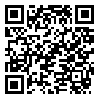Volume 2, Issue 1 And 2 (23 2006)
irje 2006, 2(1 And 2): 45-57 |
Back to browse issues page
Download citation:
BibTeX | RIS | EndNote | Medlars | ProCite | Reference Manager | RefWorks
Send citation to:



BibTeX | RIS | EndNote | Medlars | ProCite | Reference Manager | RefWorks
Send citation to:
Naghavi M. Transition in Health Status in the Islamic Republic of Iran. irje 2006; 2 (1 and 2) :45-57
URL: http://irje.tums.ac.ir/article-1-185-en.html
URL: http://irje.tums.ac.ir/article-1-185-en.html
Abstract: (24948 Views)
Background and objectives: Data on transitions in health status are among the most important types of information used for promotion of health and social development. Health transition comprises two elements: demographic and epidemiologic transition. This paper depicts the health transition in I.R. Iran over the last few decades.
Methods: We used demographic data gathered over the last 45 years in order to get an idea of the demographic transition. Several other sources were used to gather data on mortality and fertility patterns, occurrence of communicable and non-communicable diseases, etc to trace epidemiologic transition.
Results: Indices relating to mortality and fertility patterns have undergone marked changes parallel with rising income levels, urbanization, industrialization, and access to health care. Also notable are decreasing under-5 and maternal mortality rates, aging of the population, and a shift from communicable to non-communicable diseases.
Conclusions: Because of the uneven rate of social development, epidemiologic transition has followed varying patterns across different regions. It is crucial that these differences be taken account of in future health programs.
Methods: We used demographic data gathered over the last 45 years in order to get an idea of the demographic transition. Several other sources were used to gather data on mortality and fertility patterns, occurrence of communicable and non-communicable diseases, etc to trace epidemiologic transition.
Results: Indices relating to mortality and fertility patterns have undergone marked changes parallel with rising income levels, urbanization, industrialization, and access to health care. Also notable are decreasing under-5 and maternal mortality rates, aging of the population, and a shift from communicable to non-communicable diseases.
Conclusions: Because of the uneven rate of social development, epidemiologic transition has followed varying patterns across different regions. It is crucial that these differences be taken account of in future health programs.
Keywords: Health transition, Epidemiologic transition, Demographic transition, Mortality pattern, Morbidity
Type of Study: Research |
Subject:
General
Received: 2006/04/15 | Accepted: 2006/10/4 | Published: 2013/09/8
Received: 2006/04/15 | Accepted: 2006/10/4 | Published: 2013/09/8
| Rights and permissions | |
 |
This work is licensed under a Creative Commons Attribution-NonCommercial 4.0 International License. |





